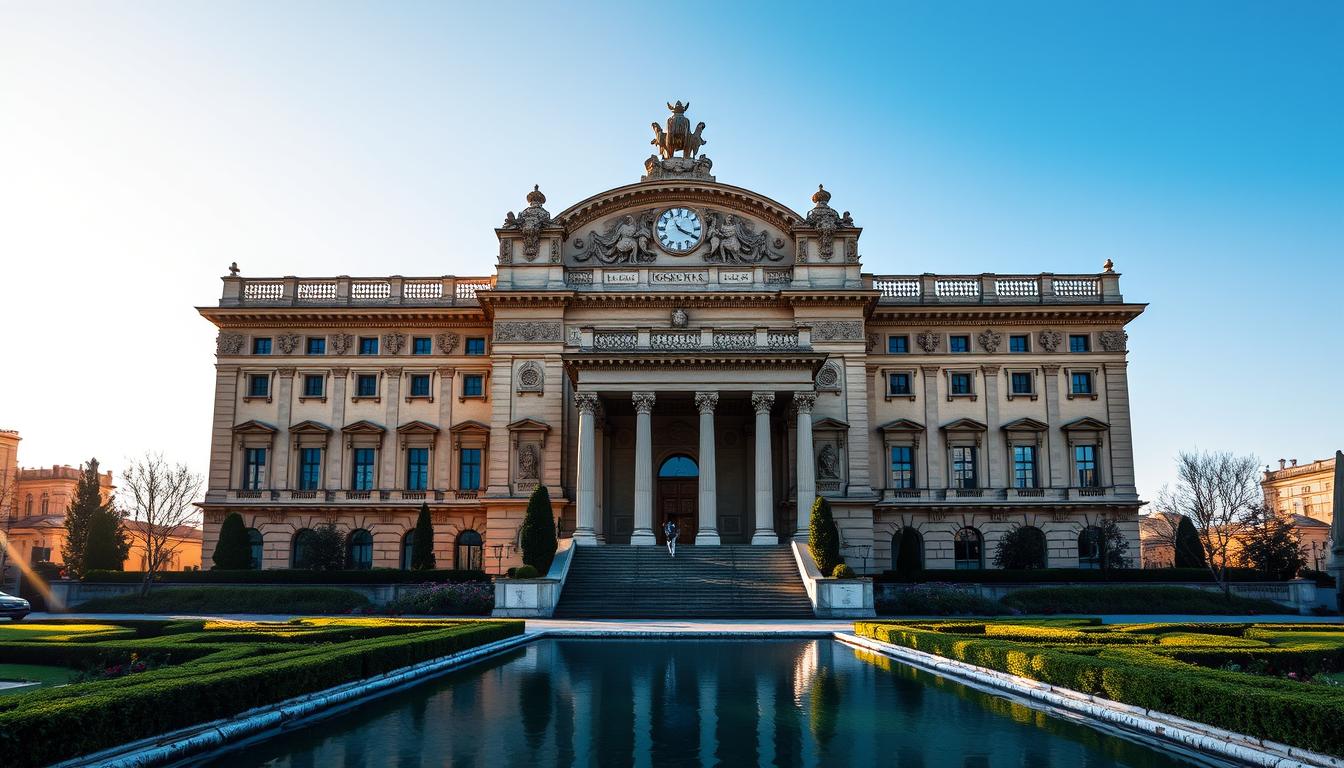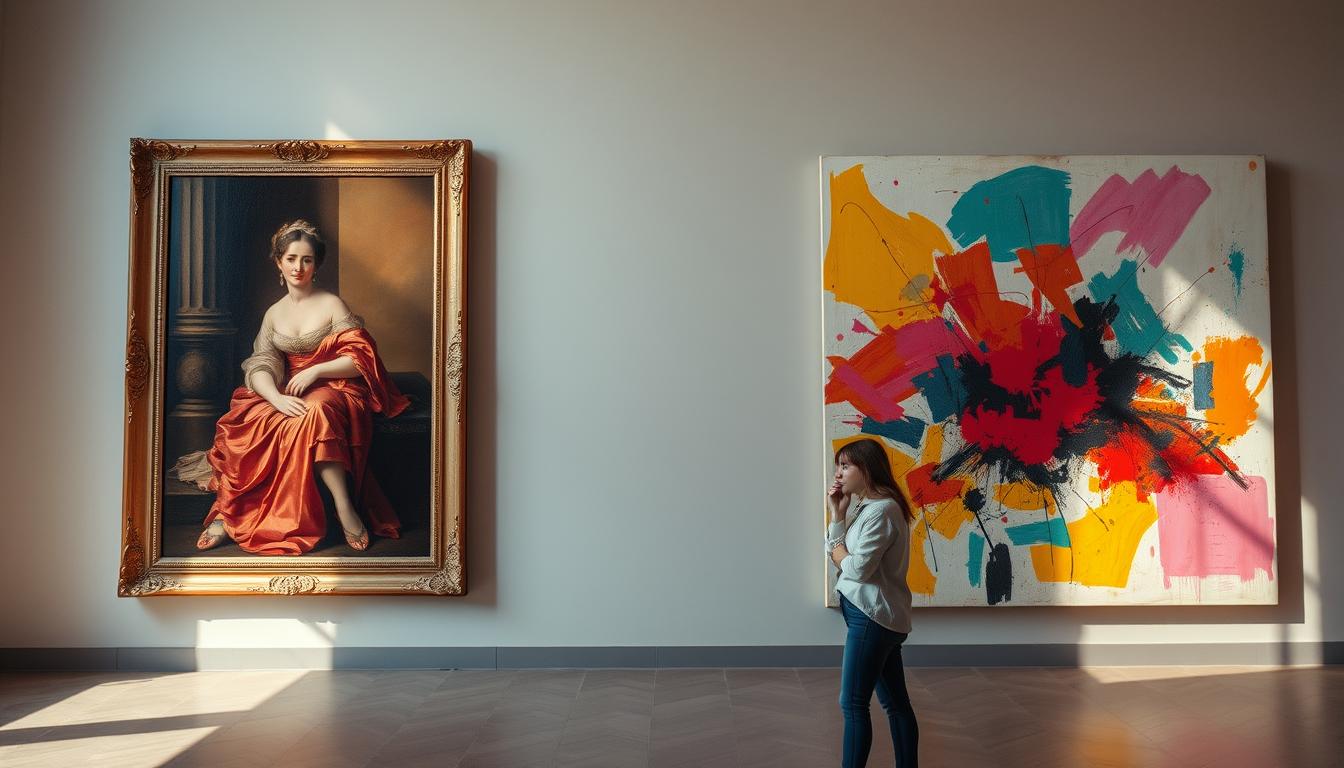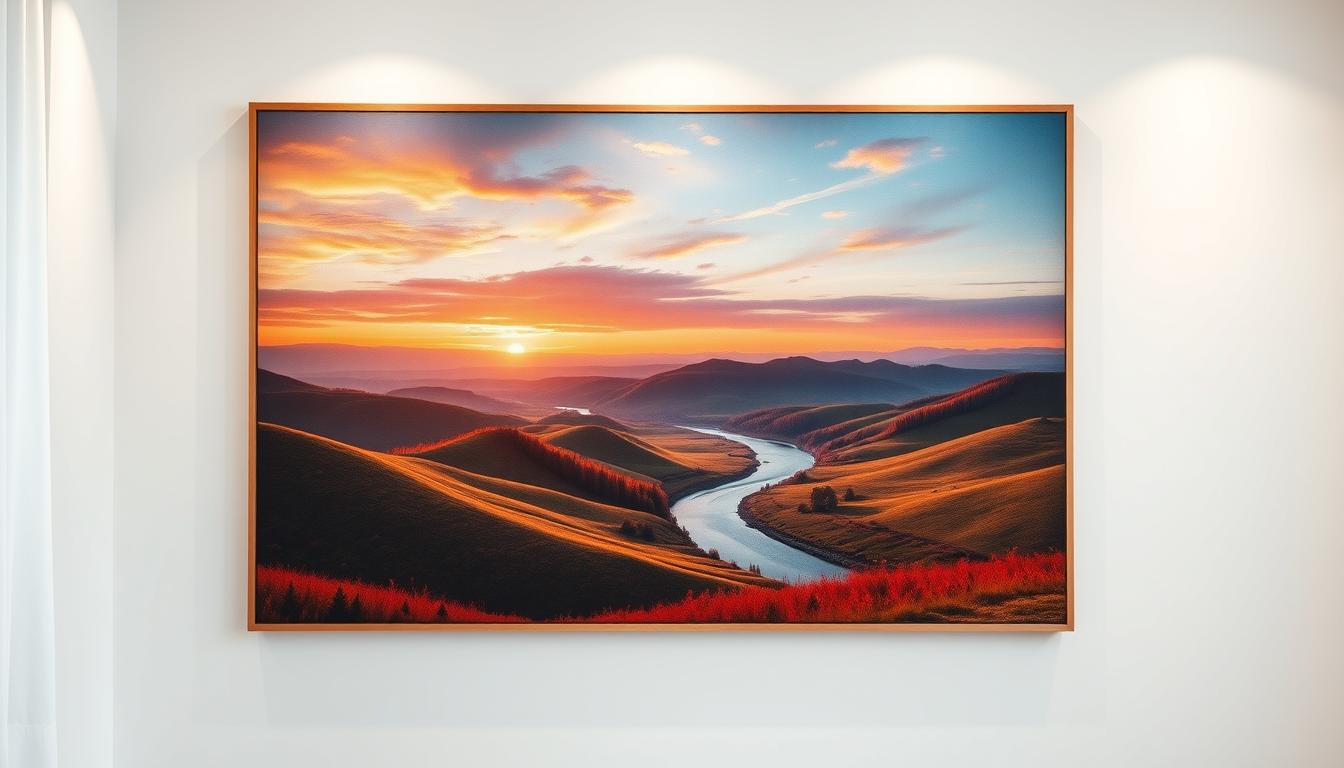What if a single visit could turn curious visitors into hands-on explorers of art, invention, and history?
The guide invites travelers to plan a memorable visit to Italy’s largest museum dedicated to a Renaissance genius. It sits inside a 16th-century monastery in Milan and blends historic charm with modern exhibits.
Visitors will find seven engaging departments, from transport and energy to art & science, plus iconic items like the Enrico Toti submarine and the 1906 Railway Pavilion.
This section previews must-see highlights and practical tips—opening hours, ticket types, accessibility, and family-friendly labs—so readers know what to expect before they go.

Key Takeaways
- The site pairs historic setting with hands-on exhibits ideal for families and students.
- Highlights include reconstructed machines from famous drawings and large tech artifacts.
- Practical planning info helps visitors book tickets and check accessibility.
- The guide links to Rossetti Art for themed wall art and artist social channels.
- Clear, plain-English tips make this a useful pre-visit resource for U.S. travelers.
Why the National Museum of Science and Technology in Milan Belongs on Your Itinerary
A visit to Milan's premier science hub offers a blend of tech, history, and hands‑on learning in a striking monastery setting.
The museo nazionale opened in 1953 inside the San Vittore al Corpo monastery. It grew into Italy’s largest science museum with wide public appeal.
Visitors can choose from many departments—Materials, Transport, Energy, Communication, the Leonardo area, Art & Science, New Frontiers, and Science for young people. Each section includes themed exhibitions and interactive workshops.
The transport galleries showcase historic aircraft like the Macchi MC 205 V from the Second World War and a 1906 Railway Pavilion styled as an Art Nouveau station. The S‑506 Enrico Toti submarine is a standout object.
| Feature | Why it matters | Visitor tip |
|---|---|---|
| Departments | Tailor your route by interest | Pick two main sections for a half‑day visit |
| Exhibitions | 36 thematic displays and 14 labs | Book special workshops when buying a ticket |
| Signature objects | Rare aircraft, submarine, railway station | Allow extra time near large objects |
- The setting and scope make this museo nazionale scienza a must for travelers.
- Knowing departments and highlights helps plan time and choose the right ticket.
Leonardo da Vinci, Art & Science: Face to Face with the Renaissance Genius
This section lets visitors trace how sketches turned into working ideas that shaped art and engineering.

Models from notebooks show flying machines, a tank, a hydraulic saw, and a spinning machine. Each model was rebuilt by experts to test how the original drawings might have worked.
Workshops and training on view
The New Leonardo Galleries map his training from 15th‑century Florence to Milan under the Sforzas. Displays highlight his careful observation of nature and how that fed both art and machines.
Art meets engineering
Related collections expand the story: horology pieces trace timekeeping advances, musical instruments recreate period sounds, and jewelry shows material craft. Labels explain which parts follow the drawings and which were added to make the models operate.
| Display | What it shows | Visitor tip |
|---|---|---|
| Working models | Flight, propulsion, and mechanics in action | Compare model with nearby drawings |
| New Leonardo Galleries | Training, nature study, immersive late drawings | Allow time for the immersive installation |
| Horology & instruments | Clocks, luthier workshop, jewelry | Listen for instrument demos on schedule |
Why this section matters: it balances art and invention so visitors see how sketches became machines. For those inspired by the pages and forms, Rossetti Art offers Da Vinci‑inspired wall art to bring that creative spirit home.
Hero Exhibits and Departments That Make the Museum Unmissable
The museum’s star displays—aircraft, a submarine, and a Belle Époque station—anchor a focused route for first-time guests.
Transport fans will appreciate the scope: early replicas and Second World War aircraft sit beside jet‑age types like the Fiat G.91 and the F‑86K. These aircraft illustrate design shifts from fabric biplanes to metal fighters.
All aboard the Enrico Toti S‑506
The Enrico Toti S‑506 submarine is a dramatic centerpiece. With an extra ticket, visitors can board and get a guided glimpse into life below the surface.
Railway Pavilion and station atmosphere
The Railway Pavilion recreates a 1906 Expo station. Guests stroll platforms beside locomotives such as the E 430 and Gr 552 and historic Milan transit cars.
Energy, communication, and materials
Energy exhibits show the Margherita thermoelectric plant and early industry hardware. Communication galleries link telescopes, a working Foucault pendulum, and the path from telegraph to television.
New Frontiers and the Science for young people area turn complex ideas into hands‑on labs. Across departments, machines and materials are paired with stories that make engineering real.
- Priority picks: aircraft, submarine, station, energy plant, and communication instruments.
- These hero parts help visitors plan a shorter, high‑impact visit.
Plan Your Visit: Tickets, Hours, Accessibility, and Location
A well-planned visit saves time: decide tickets, check hours, and map the departments you most want to see.

Tickets and reductions
Choose the right ticket. Standard admission applies for most adults. Reduced fares are available for children and young people ages 3–26 and for seniors 65+.
Children under 3 and accompanied disabled visitors enter free. Visitors using reduced tickets should bring ID at entry.
Current hours
The venue welcomes guests Tuesday–Friday, 9:30 a.m.–5:00 p.m., and Saturday–Sunday, 9:30 a.m.–6:30 p.m. Weekdays are quieter; weekends allow extra time to explore.
Where to go
The complex spans Via San Vittore 21 and Via Olona 6/a in central Milan. It sits beside the Basilica of Sant’Ambrogio and above an ancient Roman site, making it easy to pair a museum stop with a historic walk.
Good to know
The restored monastery layout is wheelchair accessible and family friendly. Many hands‑on labs for children require pre‑booking, so book early for busy days.
| Need | Details | Tip |
|---|---|---|
| Tickets | Standard, reduced for ages 3–26 and 65+ | Have ID ready for discounts |
| Hours | Tue–Fri 9:30–17:00; Sat–Sun 9:30–18:30 | Visit weekends for longer opening |
| Access & amenities | Wheelchair access, vending machines, picnic area | No full cafeteria on site |
Pro tip: With roughly 50,000 m² and 16,000 historical objects, pick one or two departments before you enter. For questions about art inspired by the galleries after your visit, chat with Rossetti Art for help choosing prints.
Inspired by Da Vinci? Explore Rossetti Art
Turn museum inspiration into art for the home.
Turn museum memories into daily inspiration with art that echoes historic sketches and working models. Rossetti Art curates canvas prints and fine reproductions that pair well with the themes in the Leonardo galleries.
Shop Da Vinci‑inspired wall art at Rossetti Art
Keep the spirit of the visit alive. Choose pieces that recall famous models and sketches from the nazionale scienza area. Prints fit living rooms, home offices, and study corners to remind visitors of the creativity they saw.
🧭 Explore more → https://rossettiart.com/collections/canvas-print
Visit the shop → https://rossettiart.com/
Get personal help: 💬 Chat with us → https://m.me/104795508292657
Follow the creative journey: 📸 Instagram → https://www.instagram.com/chiara_rossetti_art | 🔵 Facebook → https://fb.com/104795508292657
- Browse a dedicated area of canvas prints inspired by key sketches and reconstructed models.
- Ask for guidance on sizing, framing, and shipping—especially useful for U.S. buyers.
- Pair art with a trip photo to create a personal gallery that links travel and taste.
Pro tip: If a particular invention caught the eye, request pieces that echo that motif. Rossetti Art helps match a print to the right wall and keeps the science technology spirit on show long after the visit.
Conclusion
This museum turns pages of old notebooks into real, working examples that invite hands‑on discovery.
, Visitors find a powerful blend of story and engineering where drawings meet large artifacts. The exhibition links aircraft, energy systems, materials, and communication tools in a clear narrative.
Plan time and buy the right ticket if special access is needed. Prioritize hero sections like the Railway Pavilion and the Enrico Toti submarine when time is tight.
After the visit, extend the inspiration at home. Before you go, explore Da Vinci‑inspired wall art: 🧭 https://rossettiart.com/collections/canvas-print. Shop → https://rossettiart.com/ • 💬 Chat → https://m.me/104795508292657 • 📸 Instagram → https://www.instagram.com/chiara_rossetti_art • 🔵 Facebook → https://fb.com/104795508292657
FAQ
What are the museum's opening hours and best times to visit?
The museum is open Tuesday–Friday from 9:30 a.m. to 5 p.m. and Saturday–Sunday from 9:30 a.m. to 6:30 p.m. Weekends are busier, so visitors who prefer a quieter experience should go on weekday mornings. Planning around school holidays helps families avoid peak crowds.
Where is the museum located and how can visitors get there?
The site sits near Sant’Ambrogio, with main entrances on Via San Vittore and Via Olona. It is easy to reach by public transport; tram and metro stops are within walking distance. Taxis and bike-sharing options are also convenient for those coming from central Milan.
What types of tickets and reductions are available?
The museum offers standard tickets, reduced fares for children and students, and senior discounts. Children under 3 and accompanied visitors with disabilities enter free. Group rates and combined tickets for special exhibitions may apply, and online booking is recommended for peak dates.
Are the exhibition spaces accessible for visitors with mobility needs?
The site provides wheelchair access to main galleries and most labs. Some historic areas have limited access due to original architecture. Visitors who need assistance should contact the museum in advance to arrange support and reserve accessible services.
What highlights should visitors not miss inside the museum?
Key attractions include the extensive gallery dedicated to Renaissance inventions, large transport displays featuring aircraft and Second World War exhibits, the railway pavilion with historic locomotives, and the Enrico Toti S‑506 submarine. Energy and communication galleries showcase telescopes, early TV equipment, and power technologies.
Are there hands‑on activities for children and young people?
Yes. The museum runs interactive labs and educational programs designed for kids and teens, focusing on experimentation and new frontiers in science. Some workshops require pre‑booking and may have age limits, so families should reserve spots ahead of their visit.
Can visitors see working models based on Renaissance drawings?
The museum displays many mechanical models inspired by historic drawings, including flying machines, a tank concept, hydraulic saws, and other devices. These reconstructions illustrate the intersection of art and engineering and often include explanatory panels and immersive displays.
What transport exhibits are on display, and is the submarine open to the public?
The transport section features aircraft from various eras, including Second World War machines, and a recreated Art Nouveau station with historic locomotives. The Enrico Toti S‑506 submarine is a highlight; parts of it are accessible for visitors, offering a close look at naval technology and life onboard.
Is there an on‑site shop for themed gifts and prints?
Yes. The museum shop sells books, replicas, educational kits, and prints inspired by the collections. Visitors seeking wall art and canvas prints can also explore Rossetti Art online for Leonardo‑inspired pieces and related merchandise.
Are food and drink options available at the museum?
Refreshments are limited on site, with a small café or vending options depending on current services. Visitors may want to plan for nearby cafés in the Sant’Ambrogio area, especially for longer visits or family outings.
How does the museum balance historical artifacts with modern displays and technology?
The museum mixes historic objects—such as horology pieces, musical instruments, and jewelry collections—with contemporary interpretive installations. Interactive displays, immersive galleries, and digital resources help contextualize the collections for diverse audiences.
Can schools and groups arrange guided tours or workshops?
Yes. Educators can book guided tours, tailored school programs, and hands‑on labs. Advance reservation is recommended to secure preferred dates and ensure appropriate group sizes and materials for activities.
Are there photography rules inside the galleries?
Non‑commercial photography is generally permitted in most areas, but flash and tripods may be restricted. Specific exhibitions or objects might prohibit photos to protect fragile materials, so visitors should follow posted signs and staff instructions.
How should visitors plan a multi‑part visit to cover key departments?
To see main departments—Renaissance machines, transport, energy, communication, and railway—allow several hours. Prioritize must‑see galleries and check workshop schedules in advance. Those short on time can focus on one or two sections and return another day for deeper exploration.






Leave a comment
This site is protected by hCaptcha and the hCaptcha Privacy Policy and Terms of Service apply.